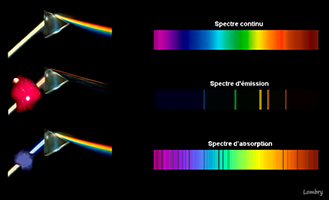In 1666, during an optical experiment that he later described as “crucial,” Newton discovered the specter of light by playing with a prism in a darkened room. Although his experience will be criticized by the Roman clergy until the early eighteenth century for its theological consequences (the white light was not pure, immaculate, but composite), Newton was certain to hold the demonstration of one of the multitude of divine influences.
Expert in mathematics and proud to say that he never made assumptions, in 1672 Newton wrote to the Secretary of the Royal Society, Henry Oldenburg, a comment that proved premonitory: “It is a discovery (scientific) which led me to make this telescope and which I do not doubt that it will be more profitable than the communication of this instrument, being in my opinion the strangest if not the most important revelation made to date of the operations of the Nature”. Three weeks later he revealed his discovery: it was the theory of light.
Thanks to his experiments, Newton realized that white light, such as that which comes from the Sun, was composed of several radiations. Among these we know the visible spectrum that offers the characteristic colors of the rainbow. Isolated light or monochromatic radiation is characterized by its wavelength or frequency, period and amplitude. We also know that these luminous radiations carry energy, remember your sunburn! Quantum physics teaches us that a monochromatic radiation carries this energy by quanta, small particles called photons. Paradoxically, in certain conditions light spreads like a wave.
It was William Wollaston who discovered in 1802 that the spectrum of the Sun did not appear as a continuous colored band, as Newton had discovered, but that it was furrowed by dark lines superimposed on the continuous spectrum. It is to the German optician Joseph von Fraunhofer that we owe the first spectral analysis in 1811.
Four years later Joseph von Fraunhofer explained the origin of the dark stripes and presents them in very specific places of the spectrum of the Sun, the stars and the Moon. This phenomenon was caused by the selective absorption of light as it passed from one medium to another.
In 1842, the German mathematician Christian Doppler specified that the wave emitted by a source was related to its speed, but it was Sir W. Huggins who succeeded in demonstrating it in 1868. He also proved that the lines present in the The spectrum of the other stars corresponded to those emitted by terrestrial substances, demonstrating that the stars were made of the same matter as the ordinary bodies and not of an exotic substance. His discoveries paved the way for modern spectroscopy.

hello wow
69
Permisi gan Ane Numpang Download
Hingga Jaya terus
down
123
456
nice
Good
sadsad